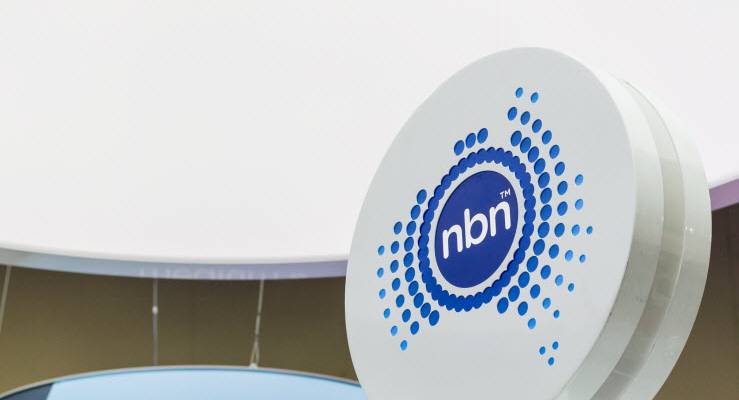
Information provided to a Senate committee this week included the revelation that more than 850 executives at the National Broadband Network (NBN) were being paid more than $200,000 a year — about the same as the base salary of a federal backbencher, as one MP on the committee observed.
That’s also more than the 800 employees NBN Co retrenched in July claiming they were surplus to requirements now that the rollout is (theoretically) complete.
The question is not so much the salaries per se. It is whether Australia is getting value for money from the NBN. Are the execs earning their keep?
Well, firstly, this vital infrastructure project is far from done. In fact, the government has just allocated $3.5 billion and ordered the company to start upgrading the network so homes using failing copper wires can be provided with a fibre connection if the customer needs fast broadband.
Unfortunately fibre is only going to be rolled out “on demand” and will come at a much higher monthly subscription fee — although the specifics on this remain unclear. Former NBN Co CEO Bill Morrow famously told an earlier Senate hearing that if people wanted high speed internet they’d have to pay extra for it. Those chickens have just come home to roost.
It appears the extra cost will now be averaged out and borne by people shifting to fibre-to-the premises (FTTP) via a substantially increased monthly subscription fee. It’s a bit like paying $70 a month over two years for a smartphone instead of $1800 up front.
A white flag moment was inevitable of course. No government could risk going into another election with the NBN in the mess that has resulted from Tony Abbott’s politically-inspired demand that his communications minister, Malcolm Turnbull, “demolish” Labor’s state-of-the-art fibre model.
To be fair to Turnbull, he took advice from a bunch of IT industry mates who should have known better. He also relied on the communications department and its then head Drew Clarke — who now sits on the NBN Co board having retired from the public service.
Clarke and his engineers should have warned Turnbull that Telstra’s copper network had been neglected for years because even Telstra accepted that we would need fibre sooner or later.
Industry groups, including TelSoc, called on the government to include extra funding for our problematic NBN in its COVID-19 recovery plan. This would have created much needed jobs and fast tracked the inevitable repair work badly needed to help Australia deal with an emerging digitally enabled future.
People being forced to work from home during the pandemic has highlighted the need for #BetterBroadband (a campaign initiated five years ago when I was CEO of Internet Australia). Likewise, we’re seeing an upsurge in interest from people in capital cities looking to relocate to more affordable regional centres. For this to be viable we’ll need to improve telecommunications services — especially internet access.







Every man and his dog warned Turnbull about the state of the copper wires. For anyone to claim, as Crikey seems to, that he wouldn’t have known is a test of Trumpian dimensions.
My point is that under pressure from Tony Abbott Malcolm Turnbull chose to take the advice of his ‘techie’ mates rather than independent experts. Sadly, he still clings to a flawed belief in his multi-technology mix model. Paul Fletcher, a political ally of Turnbull, continues to publicly defend the MTM but his actions in recent times clearly belie a recognition that the voters think the Coalition’s NBN is a dud.
Fletcher has been there from day one as deputy communications minister in 2013 as I recall. Hell will freeze over before the Libs admit they wasted billions.
It would not matter copper, fibre, microwave….the cost of the business infrastructure heads is approximately the same. The TCO on the equipment is different not the TCO on the heads, Fibre still needs to use PPPoE regardless of how many switched junctions you need to get to the POI.
FYI, as I have previously noted elsewhere, the mess that the NBN is in right now is not the fault of the thousands of loyal and dedicated staff who I know would much prefer to have been left to build a modern fibre network.
We had the Nats screaming that broadband was pointless for their rural constituents, while being oblivious to how the telehealth and other remote services their electors craved were to be delivered.
I would be happy to have what we had prior to NBN connection (FTTC – what a joke!) on 20 May last. 2 working landline phones, our /24 network connected to the internet for web and mail. Now we have one phone (telstra reconnected a copper pair in the street), no connection to our network and an intermittent broadcast-style internet connection that only can get web stuff (The ADSL was more reliable).
The NeoLiberals should roast in hell for screwing up what should been a Snowy Mountains style infrastructure project..
As one of the unlucky ones to get FTTN (and crap FTTN at that: max 33/6), to be equitable, EVERYONE should be rate limited to 25/5 which Abbott and Turnbull said was fast enough for anyone (until 2023 as I recall).
Anyone who wants faster should have to (a) pay the cost of getting FTTN to their premises and (b) pay for the higher speed plan.
In my case, if I want faster I will have to pay (a) and (b). I pay tax just like all those who were lucky enough to get FTTP originally, so why do I have to pay effectively twice ? All those who already have government provided FTTP should have to pay an amount (a) to allow their line to un-rate limited.